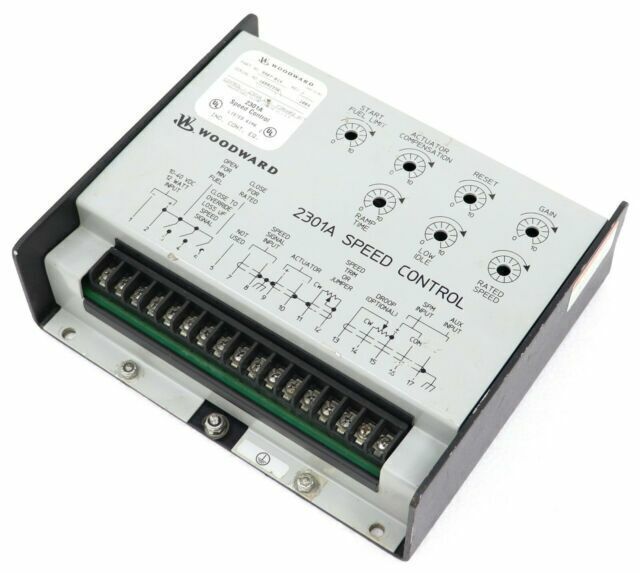
World Of Controls understands the criticality of your requirement and works towards reducing the lead time as much as possible.
9907-014 - Speed Control Module is available in stock which ships the same day.
9907-014 - Speed Control Module comes in UNUSED as well as REBUILT condition.
To avail our best deals for 9907-014 - Speed Control Module, contact us and we will get back to you within 24 hours.
Part Number: 9907-014
Manufacturer: Woodward
Product type: Speed Control Module
Availability: In Stock
Dimensions: 8.625in W x 7.25in H x 2.5in D
Operating Temperature: -40 to +85 °C
Power Consumption: 15 W
Standards: CSA Certified
Storage Temperature: -40 to +70 °C
Repair: 3-7 Day
Country of Manufacture: United States (USA)
9907-014 is a Speed Control Module developed by Woodward. It is responsible for monitoring and regulating the speed of the system it is connected to. It functions by receiving input signals such as engine speed or various process variables, and adjusts the output accordingly to maintain the desired speed setpoint. The module is designed with sophisticated control algorithms and feedback mechanisms that ensure precise and responsive speed control for machinery and engines, maintaining stability even in dynamic operational environments.
For proper functionality, it is crucial to monitor the voltage at the terminals during operation. When using a magnetic pickup sensor, the voltage across the 28th and 29th terminals must be measured. At cranking speed, the voltage should be a minimum of 1.0 V. As the system reaches rated speed, the Vrms should be around 30 V. If the voltage exceeds this threshold, adjustments should be made by increasing the gap of the speed sensor. It is important that the voltage at cranking speed remains at 1.0 V to ensure smooth operation.
Proper installation and grounding of the Module are essential to prevent malfunctions and ensure safety. All cables used for connecting the control to the engine should be shielded and constructed using twisted-conductor pairs. It is critical to never solder the braided shield, as doing so can result in malfunctioning cables or pose a serious safety risk. Additionally, grounding is a key consideration; the control must be properly grounded through a connection from the grounding lug to ensure effective grounding to the chassis of the control.
The Speed Control Module has a power consumption of less than 15 W, making it an energy-efficient solution for speed control applications. Additionally, it is CSA Certified, meeting the rigorous safety and performance standards required for industrial and commercial applications.
World of Controls has the most comprehensive selection of GE and Woodward components. Our professionals are available to help you with your requirements at any time. If you require any additional information, please contact WOC immediately.
What is 9907-014?
It is a Speed Control Module developed by Woodward.
How can very low speeds be detected?
Very low speeds can be detected using a proximity probe. The proximity probe has the capability to detect speeds as low as 0.5 Hz.
What is required when interfacing with an open collector type proximity probe?
When interfacing with an open collector type proximity probe, external pull-up resistors are required.
What do the different channels depict?
Channel 1 represents an MPU (Measurement Processing Unit) connection, Channel 2 represents a 24 V proximity connection, and Channel 3 represents a 12 V proximity connection.